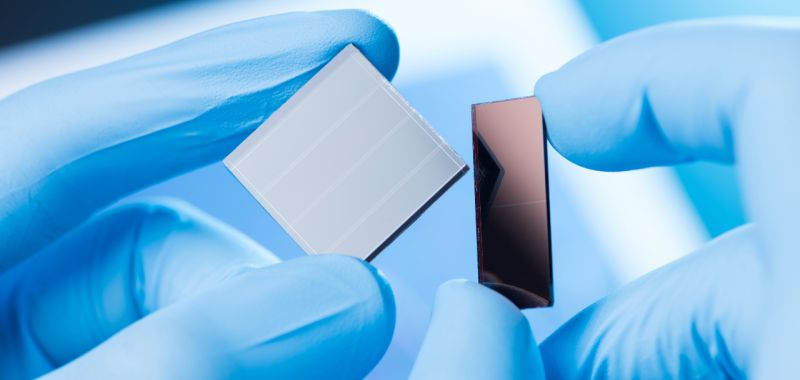2021-06-02 アメリカ合衆国・ピッツバーグ大学

・ ピッツバーグ大学が、無粒子インクを使用した銀(Ag)のマイクログリッド製造における主要な課題に対処し、粒子ベースのインクを超える多くの利点を実証。
・ マイクログリッドは、幅、ピッチと薄さを変えたアプリケーション毎のカスタマイズや多様な金属による作製が可能。オプトエレクトロニクスの様々なアプリケーションに最適となる低いシート抵抗と高い透過性を有するため、薄くフレキシブルで高耐久性の次世代ディスプレイ用透明導電膜の一選択肢として研究が進められている。
・ 現在、電子ディスプレイで最も広く利用されている透明導電膜の酸化インジウムスズ(ITO)は、大面積での性能の低下や使用によるひび割れや故障の課題がある。また、希少金属のインジウムの使用に加え、ITO 製造プロセスでは大量のエネルギーと高価な設備を必要とする。
・ 本研究では、テキサス州オースチンのテック企業である Electroninks が製造する、Ag 導電性インクによる回路描画キットのサーキットスクライブ(Circuit Scribe)への関心をきっかけに、ITO の限界に対処すべく無粒子金属インクを同社と共同で開発した。
・ その結果、無粒子インクで作製したマイクログリッドが、粒子インクで印刷作製したものよりも安定し、透過性、電極性能と機械的耐久性に優れ、粗さが低いことを確認。これらの特性は、フレキシブルディスプレイに不可欠なもの。
・ 接着、折り曲げ、折りたたみによる耐久試験では、粒子インクと ITO の両マイクログリッドに勝ることを確認。希少金属の採掘に依存しない、より高性能、低価格で高耐久性のディスプレイ開発につながる結果が得られた。
・ 有機 EL の ITO の代替としての評価に加え、透明アンテナや EMI シールドとしての利用ついても調査を進めている。
URL: https://www.engineering.pitt.edu/News/2021/Leu-Printing-a-Better-Microgrid/
<NEDO海外技術情報より>
(関連情報)
ACS Applied Electronic Materials 掲載論文(アブストラクトのみ:全文は有料)
Polymer-Embedded Silver Microgrids by Particle-Free Reactive Inks for Flexible High-Performance
Transparent Conducting Electrodes
URL: https://pubs.acs.org/doi/10.1021/acsaelm.1c00107
Abstract
We report on the fabrication and characterization of polymer-embedded silver (Ag) microgrid structures using a particle-free reactive Ag ink for flexible high-performance transparent conductive electrodes. The Ag microgrids are cured at low temperatures and embedded directly into flexible polyethylene terephthalate (PET) films to create structures needed for high transparency and low sheet resistance. The conductive grids demonstrate 91.8% transmission and a sheet resistance of 0.88 Ω/sq corresponding to an optical conductivity ratio σdc/σop of nearly 4500 with gridlines of 10 μm width. The microgrids may be fabricated with gridlines down to 3.5 μm width. The fabrication of microgrids from a particle-free reactive ink results in several enhancements compared to microgrids fabricated from particle-based conductive Ag inks. The use of particle-free ink offers about 2.5 times higher conductivity, over 3 times lower surface roughness, and better stability under mechanical adhesion, bending, and folding tests. Our results demonstrate the following: (1) a scalable approach to microgrid manufacturing, (2) microgrids with nearly the best transparent electrode performance properties, and (3) the clear benefit of the paradigm of particle-free conductive inks compared to conventional nanoparticle inks.



